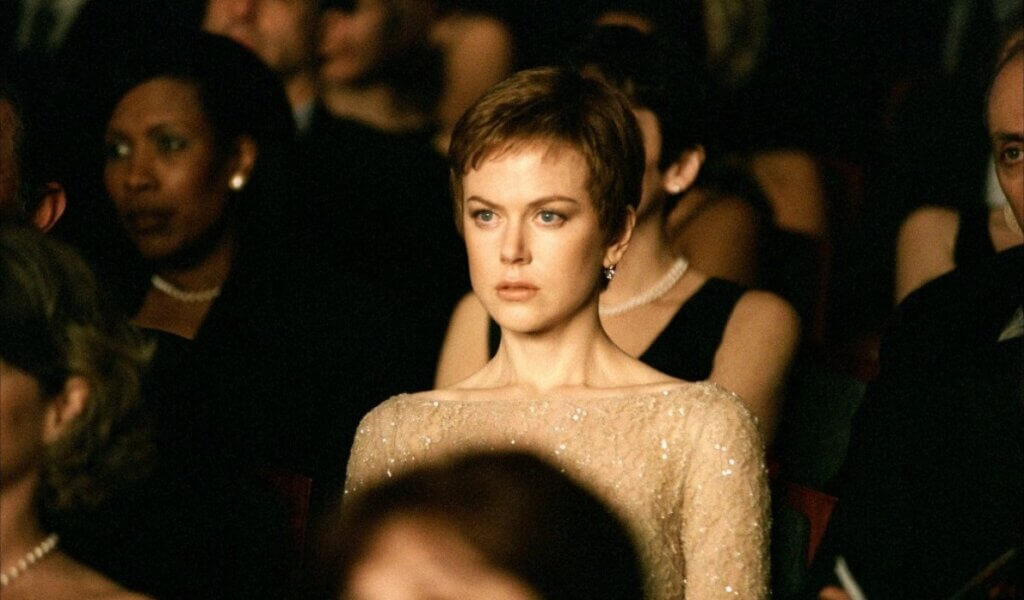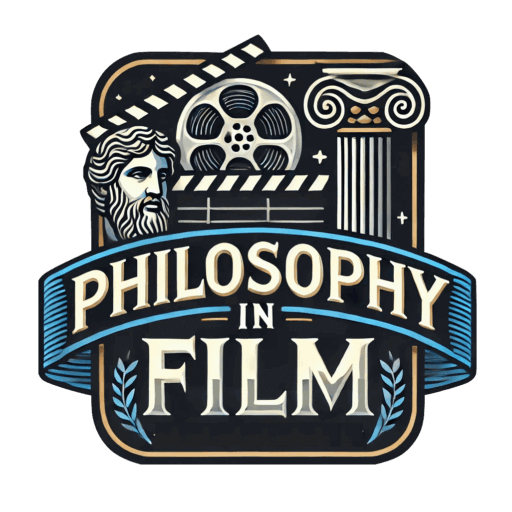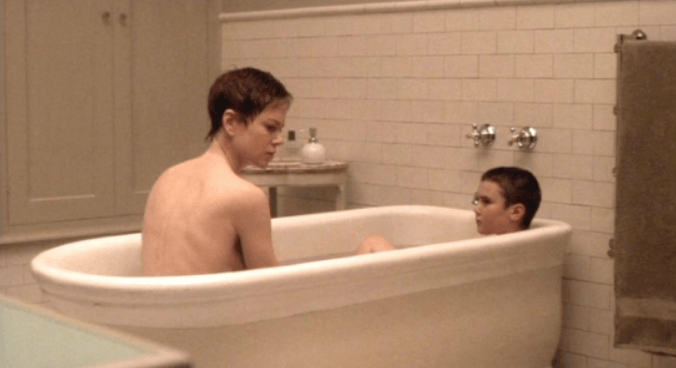Jonathan Glazer’s Birth and the Definition of Art-Horror
Noël Carroll’s theory of “art-horror” lays out a structure for classifying works of horror in fiction. Specifically, he identifies the genre based on its intended effects on audiences. While his evaluation does accurately define characteristics of fictions that lie at the “core” of the genre, his theory is not without fault. An interesting test case is Jonathan Glazer’s Birth (2004), in which a woman encounters a young boy, Sean, who claims to be her dead husband. Though the film meets many of the requirements of a horror film laid out by Carroll, it does not reflect the basic intention that delineates horror from other genres. While Sean does fit Carroll’s definition of a monster, and Birth’s narrative also fits the complex discovery plot structure, it is problematic to consider the film to be part of the horror genre due to the clear lack of intention to arouse “art-horror” in the audience on the part of the filmmaker, effectively weakening the applicability of Carroll’s theory.
In Jonathan Glazer’s Birth, a 10-year-old Sean intrudes on a party in order to speak to the protagonist of the film, Anna. He proceeds to tell her that he is the reincarnation of her husband, also named Sean, who died ten years prior. Though she and her family initially dismiss the boy, young Sean persists and eventually persuades Anna by answering questions that only the real Sean would know. She quickly falls in love with the boy, much to the dismay of her family and her husband-to-be, Joseph. Eventually, it is revealed that the boy is probably not Sean, because the real Sean secretly loved Clara, Sean’s sister-in-law, while young Sean clearly loves Anna. While Anna and the boy decide to part ways on the assumption that he is not really Sean, the ending is left somewhat ambiguous regarding the legitimacy of his reincarnation.
To begin, it is important to establish how exactly Sean constitutes a “monster” by Carroll’s definition. Carroll defines the monster by three basic traits: 1) the monster cannot be explained by contemporary science, 2) the monster is threatening, and 3) the monster is impure. Sean fulfills the first criteria by being a reincarnation. While the truth of his reincarnation is not made explicit, the potential for a supernatural account of Sean’s return is maintained throughout the film, only to be strongly challenged with physical evidence towards the very end. Therefore, Sean (as a potential reincarnation) cannot be explained by science because reincarnation is mystical by nature and has no scientific grounding. Regarding the second criteria, Sean is not threatening in a physical sense. He is not trying to kill Anna or her family. However, his intrusion into their lives does pose a threat to their conventional way of life, as well as a threat to Anna’s engagement to Joseph.
Additionally, as Anna begins to show physical attraction to Sean (namely during separate scenes in which they briefly kiss and sit together in a bath tub), he suddenly poses a threat to conventional Western beliefs regarding sexuality. An adult female being sexually attracted to a ten-year-old boy is considered very taboo, and Anna’s family proves this by threatening to call the police if she does not stop seeing him. Sean meets the third criteria by occupying contradictory categories, including his status as both young and old, boy and man, dead and undead, and married and single. His existence does not fit into a “normal” worldview, thus making him seem impure.

With Sean playing the part of the monster, the narrative follows Carroll’s outline of the Complex Discovery Plot. The four stages of this plot structure are: onset, discovery, confirmation, and confrontation. The onset is the stage in which the monster is presented to the audience. During the discovery stage, the characters are made aware of the monster. In the confirmation stage, the monster’s existence must be proven to an authority figure, and in the final confrontation stage, there must be a battle between the humans and monster. While this outline may seem a little too rigid to apply to Birth, the general progression of the story fits this structure, and Carroll also allows for variations as well as overlapping stages for this plot type.
» You Might Like: Trainspotting and the Dilemma of Scottish National Identity
The onset and discovery stages are mostly overlapped in Jonathan Glazer’s Birth, because the audience is made aware of Sean’s “monster” status at the same time as Anna, and only shortly before the rest of her family, however none of them actually believe that he is what he claims to be. This requires that Sean prove his story to them, which leads to the confirmation stage, when Anna finally accepts that Sean is actually her dead husband. It is most evident that Anna finally believes Sean during a scene in which she and Joseph attend the opera, and the camera slowly zooms in on her shocked expression while music swells in the background. This stage is brought on after the family sits down to listen to a recording of Sean answering questions asked by the late Sean’s brother, who is also a doctor.
Though it would seem that the doctor would be the one who must be convinced (since doctors are most often the “expert” characters in horror films), it is actually Anna whose confirmation is most important. Sean is only interested in convincing Anna because, as her formerly dead husband, he loves her. So despite the fact that the rest of Anna’s family never comes to believe Sean’s story, it is irrelevant to his intentions to be with Anna. And despite their not believing him, he still poses a threat to their familial wellbeing. One might question whether he is still impure if the majority of characters in the film do not accept his interstitial existence, but he still manages to appear impure (to a degree) through his behavior. He knows things that he should not know, he has the uncanny ability to persuade and possibly even seduce Anna, and he also never really acts like a “normal” child. He sits and stares without saying much, and he continues to make outrageous claims that make him seem completely foreign to the other characters.
However, it is this very skepticism that allows for the confrontation stage to take place. During this stage, and even beginning in the previous stage, three separate groups emerge: the monster (Sean), the victim (Anna), and for lack of a better term, the angry mob (Anna’s family). It becomes the family’s mission to save Anna from the spell that Sean has cast on her. Although the family shows their skepticism throughout the film, they become increasingly dismayed as Anna becomes more convinced of Sean’s story. In one scene, Anna’s sister and mother try to physically stop her from seeing Sean and threaten to have her arrested. In another scene, Anna’s fiancée, Joseph, even attacks Sean out of jealousy, however Joseph leaves after this and becomes relatively irrelevant to the struggle between Sean and the family. Eventually, adult Sean’s sister-in-law, Clara, confronts Sean and reveals that the adult Sean was actually in love with her, not Anna. At this point, the audience is made aware of the love letters from adult Sean that young Sean discovered, providing the potential for a naturalistic explanation for all of his previously inexplicable knowledge about adult Sean’s life.
However, it does not fully explain why he is so convinced that he is the reincarnation of Sean, and strangely it is only his confusion upon hearing that adult Sean actually loved Clara more than Anna that convinces young Sean that he may be wrong. He reasons that because he truly loves Anna, and the real Sean truly loved Clara, he must not be the real Sean. In this way, Clara (and by extension the rest of the family) defeat Sean and “banish” the monster out of him. He admits his mistake and decides to leave Anna alone. He is defeated now because: 1) he no longer considers himself a reincarnation, making his existence explainable by science, 2) he is no longer a threat to Anna, her marriage, her family, or their general way of life, and 3) he is no longer impure because he does not occupy multiple contradictory categories. However, a possible “return” of the monster is hinted at in the final scene, which shows Anna running out on her wedding with Joseph, implying that she may still believe that the boy is actually Sean, suggesting that the monster is still out there.
While Sean’s status as a monster and the narrative structure of the complex discovery plot make Jonathan Glazer’s Birth fit into the horror genre by Carroll’s definition, this distinction is complicated because the film does not seem to be a horror film. It does not seem to be the intention of the filmmaker to induce “art-horror” in the audience, which is the most fundamental characteristic of a horror film (according to Carroll). There are no attempts to startle the audience with buses, the soundtrack does not try to imply a sense of dread, and while the reactions of the majority of the characters (namely Anna’s family, particularly Anna’s sister) show disgust and contempt for the boy, there is no indication that the audience is meant to reciprocate these emotions.
Instead, the audience is meant to sympathize with Anna. The story is told mostly from her perspective, and her anguish over her lost love makes her the tragic hero of the story. We do not identify with the rest of Anna’s family because they are not portrayed as “positive” characters per se. They appear to be the most rational characters in the film, but their skepticism and disgust with Sean serve as barriers to Anna’s happiness, rather than an indication of an intention to induce “art-horror.” Although Anna is skeptical at first (and by extension the audience is also skeptical), she eventually comes to believe Sean, and by extension the audience does (or at least is meant to) as well. While the implied sexual attraction between Anna and Sean may be obscene to some audiences, it is not Sean himself that causes the disgust, nor is this plot point intended to frighten audiences. Although Anna may be the victim of Sean’s intrusion into her life, their relationship is tragic rather than horrific, because it is based on Anna’s love for her lost husband, and their mutual love that is not accepted by society.
While Jonathan Glazer’s Birth fits Noël Carroll’s structure for a complex discovery plot and Sean meets the criteria for a horror monster, it is problematic to identify the film as horror. Even to consider it as lying on the periphery of the genre is difficult, because the key feature of Carroll’s theory on horror, the intention of the filmmaker to induce “art-horror” in the audience, is completely absent from the film. While it can be argued that Carroll’s theory is too exclusive (because it arguably excludes many films with psychotic killers), Birth shows that his theory also runs the risk of being too inclusive. Because Birth meets the structural criteria for a horror film, and yet it does not produce the effect of “art-horror,” it becomes a problematic test case for Carroll’s theory of the horror genre.


It’s a tricky film, but refreshing for defying conventional expectations; I’d never thought of it as horror…